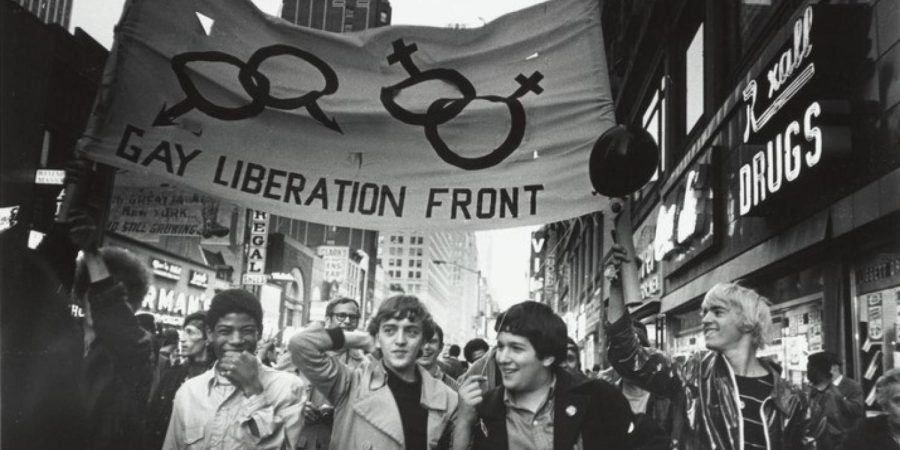What Was the Stonewall Rebellion?
June 12, 2022
Despite gay bars and clubs being illegal in the 1960s, many bar owners stayed open because they felt that it was important to provide safe spaces for members of the LGBTQ+ community. However, these bars were constantly put at a high risk of being raided by police due to the more strict, homophobic ideologies of the time. Following many attacks on gay clubs across the country, on June 28, 1969, the LGBTQ+ members at the Stonewall Inn had enough of the police brutality and began protests and riots against the police. These riots and protests lasted through July 3, 1969, and have been a staple in the advancement of LGBTQ+ rights in the United States.
The Stonewall Inn, located in New York City, was a gay bar that required guests to sign their names before entering. Though the inn was considered a “bar,” they did not need a liquor license because they registered the location as a “bottle bar.” This meant that guests had to bring their own alcoholic beverages. When the protests began following the police raid on June 28, activists such as Marsha P. Johnson, Sylvia Rivera, Miss Major Griffin-Gracy, and Storme DeLarverie directed other members of the LGBTQ+ community. In the year following the rebellion, Marsha P. Johnson and Sylvia Rivera founded Street Transvestite Action Revolutionaries (STAR), an organization for street activists.
The Stonewall Rebellion all began when the Stonewall Inn was being raided by police and Marsha P. Johnson threw a brick at the police. Johnson, Rivera, Griffin-Gracy, and DeLarverie led patrons of the inn during the six-day protest against police brutality and discrimination towards the LGBTQ+ community. Though there were many protests and calls for action prior to the Stonewall Rebellion, Stonewall is considered one of the landmark protests. Despite being commonly known as the “Stonewall Riots,” many original participants in the movement have turned away from the usage of “riots” and have said they prefer the words “uprising” or “rebellion.” They came to this decision after stating that the police called them riots in order to justify the force they used against protesters.
Almost a decade following the Stonewall Uprising, the state of New York legalized private activity of same-sex relationships. This was a major step forward for the LGBTQ+ community, as it was one of the few laws protecting same-sex couples. Since 1980, LGBTQ+ rights have been further protected by the government, most prominently through the legalization of same-sex marriage in 2015. However, these steps towards equal rights for the community would not have occurred without the Stonewall Rebellion and other similar protests such as Compton’s Cafeteria Riot, Black Night Bawl, and many more. Without these, the movement for LGBTQ+ rights would have been lacking even more than it is today. Though there is still a long way to go before members of the LGBTQ+ community are treated equally, we must give credit to the people who fought for the rights we now possess. The brave, LGBTQ+ people of color in the 1960s paved the way for future members of the community to freely express themselves and live their authentic lives.


